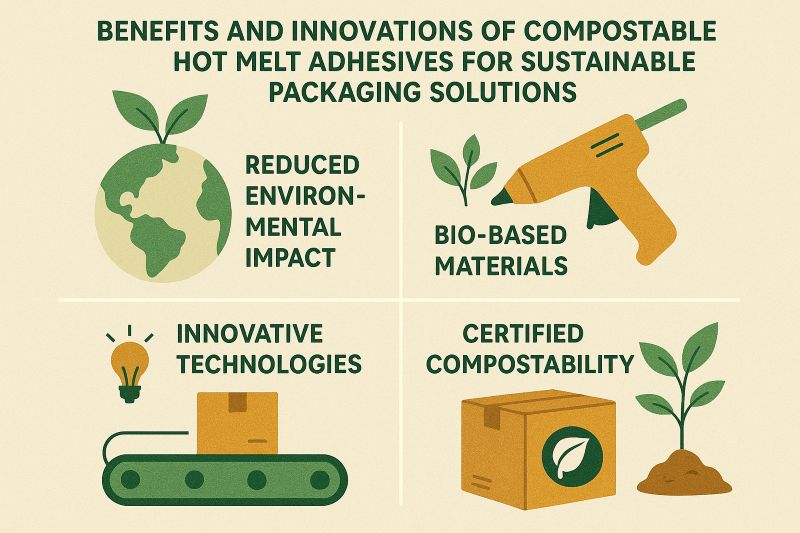
Understanding Compostable Adhesives
Types of Hot Melt Adhesives
Environmental Importance
Methods of Application
Innovations in Compostable Adhesives
Implementation Strategies
Future Trends
Frequently Asked Questions (FAQ)
Compostable adhesives are eco-conscious bonding materials designed to break down naturally in composting environments. These adhesives offer strong adhesion while supporting sustainability in industries like packaging. By integrating compostable hot melt adhesives, businesses can reduce environmental impact without sacrificing performance, making them ideal for forward-thinking operations.
Hot melt adhesives come in various formulations tailored for specific applications. Compostable variants are engineered to provide effective bonding while ensuring biodegradability. These adhesives are commonly used in sustainable packaging, paper products, and other eco-friendly applications. Selecting the right type is essential for achieving both performance goals and environmental compliance.
The use of compostable hot melt adhesives plays a vital role in minimizing industrial waste. Unlike conventional adhesives, these formulations decompose in composting systems, supporting circular economy principles. Adopting compostable adhesives contributes to reduced landfill dependence, lower carbon emissions, and compliance with environmental regulations, making them a smart choice for eco-responsible manufacturing.
Various methods are used to apply compostable hot melt adhesives based on scale and application needs. Precision applicators ensure consistent bonding for industrial lines, while handheld tools are effective for small-scale or custom applications. Automated systems enhance efficiency and reduce material waste. Regardless of the method, proper application ensures optimal adhesion and sustainability.
Recent advancements in compostable adhesives focus on enhancing bonding strength, substrate compatibility, and process efficiency. These innovations allow compostable adhesives to perform comparably to conventional hot melts in demanding settings. New formulations support broader industrial use while reinforcing environmental goals, providing a pathway for sustainable material transitions across various sectors.
To implement compostable adhesives effectively, companies should start by evaluating application needs and matching them with suitable adhesive formulations. Consideration of dispensing methods—manual vs. automated—is key for operational efficiency. Training production teams and monitoring environmental impact are also essential. Strategic adoption helps align business practices with sustainability objectives.
As environmental awareness grows, the future of compostable hot melt adhesives points toward enhanced performance and wider industrial adoption. Emerging trends include increased automation compatibility, expansion into non-packaging sectors like textiles and electronics, and improved biodegradability without compromising adhesion. Staying ahead of these trends ensures regulatory alignment and market differentiation.
Q: What are compostable hot melt adhesives?
A: These are thermoplastic adhesives that decompose naturally in composting environments, offering sustainable alternatives to traditional glues.
Q: In which industries are compostable adhesives commonly used?
A: They are widely used in sustainable packaging, paper products, and other environmentally focused manufacturing sectors.
Q: What environmental benefits do they offer?
A: They reduce landfill waste, support circular economy practices, and contribute to lower greenhouse gas emissions.
Q: What application methods are available?
A: Methods include precision applicators for industrial use, manual tools for small-scale projects, and automated systems for high-volume production.
Q: What are the current innovations in this field?
A: Innovations include improved bonding strength, broader substrate compatibility, and efficiency in application processes.
Q: What’s needed for successful implementation?
A: Evaluate specific bonding requirements, choose compatible adhesives, invest in proper equipment, and train staff on best practices.
Q: What are the future trends in compostable adhesives?
A: Expect increased use in electronics and textiles, higher biodegradability, and better integration with automated manufacturing systems.
Q: How do these adhesives meet regulatory demands?
A: Compostable adhesives help manufacturers meet sustainability mandates and consumer demand for eco-friendly solutions.